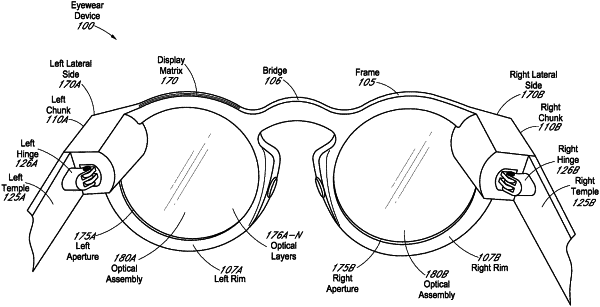| CPC G06F 3/012 (2013.01) [G02C 9/00 (2013.01); G06F 3/013 (2013.01); G06F 3/04815 (2013.01); G09G 5/37 (2013.01); G06F 2203/04804 (2013.01); G09G 2354/00 (2013.01)] | 20 Claims |

|
1. A method of adjusting a user interface of an eyewear device based on head or eye movement, comprising:
presenting, via first and second image displays of the eyewear device, an initial displayed image of a sequence of displayed images, the initial displayed image having an initial field of view corresponding to an initial head direction or an initial eye direction;
detecting movement of a user of the eyewear device by:
tracking, via a head movement tracker, a head movement of a head of the user of the eyewear device, or
tracking, via an eye movement tracker, an eye movement of an eye of the user of the eyewear device;
determining a field of view adjustment to the initial field of view of the initial displayed image based on the detected movement of the user of the eyewear device, wherein the field of view adjustment includes a successive field of view corresponding to a successive head direction or a successive eye direction;
generating a successive displayed image of the sequence of displayed images based on the field of view adjustment; and
presenting, via the first and second image displays, the successive displayed image, the successive displayed image having the successive field of view representing a combined three-dimensional observable area visible through stitching together of two displayed images having different fields of view presented on the first and second image displays.
|